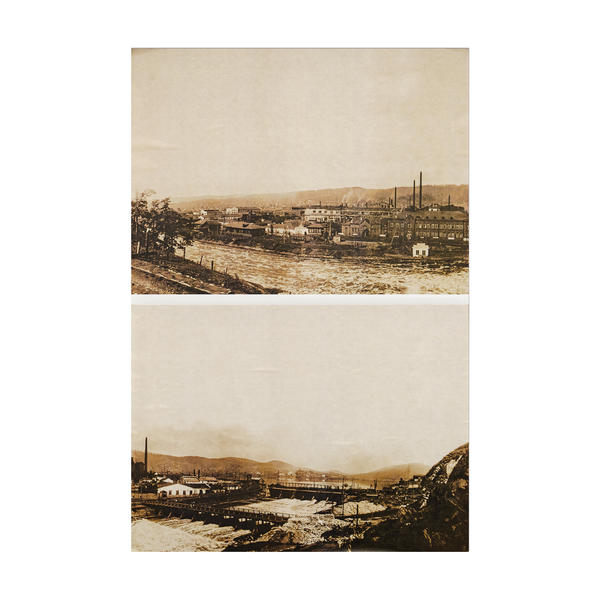At the beginning of the Great Patriotic War hundreds of enterprises were evacuated to the east. Their products were much needed at the front. That is why the equipment was installed out in the open and the local plants were converted to manufacture new products. Bashkir metal-makers began to produce strong steel and rolled metal for the plants making tanks and guns.
For this purpose engineers of the Beloretsk Metallurgical Plant used their own resources to develop a project under which specialists reconstructed open-hearth furnaces. Workers were trained in the new technologies within the shortest possible time. By the New Year of 1942 the plant began producing armour manganese and chrome steel. Its technical specifications were much higher than those of the German counterparts.
Pig iron production grew up by 8.2% to 90,856 tons in 1942. Steel production reached its peak in 1943, it increased by 46% as compared to the pre-war level and amounted to 160,000 tons. Besides, it was alloy, not ordinary, steel for ball bearings and springs. Concurrently they began production of bodies for the famous Katyusha rocket projectiles and aircraft bombs. With time the Beloretsk Plant became the main supplier of steel wire for making wire rope cables.
Its territory was used to install and start the equipment evacuated from the Odessa Steel Wire and Rope Plant and the Khartzysk Metallurgical Plant, from the bimetallic production unit of the Moscow Serp i Molot Plant. The ironworkers of Beloretsk within a very short time mastered the production of specific grades of stainless and ball bearing steel, flattened tape, silver steel and resistance alloys. 2495 tons of 60 types of wire fully met the requirements of the armament factories.
In November 1942 the blast furnace department of the Beloretsk Plant received a transferable Red Banner and the title BEST BLAST FURNACE DEPARTMENT OF THE SOVIET UNION for the victory in the All-Union socialist emulation among metallurgists. An important detail: in war time 60% of the plant’s workers were women.
The top photograph shows a panoramic view of the metallurgical plant extending along the bank of the Beloretsk water reservoir. The lower photograph captured the plant dam and the water flows of the river Belaya seething under the bridges. A complex of production buildings of the Beloretsk Metallurgical Plant was declared a monument to urban development and architecture of federal importance. But the enterprise is still working and occupies leading positions in Russian metallurgy.
For this purpose engineers of the Beloretsk Metallurgical Plant used their own resources to develop a project under which specialists reconstructed open-hearth furnaces. Workers were trained in the new technologies within the shortest possible time. By the New Year of 1942 the plant began producing armour manganese and chrome steel. Its technical specifications were much higher than those of the German counterparts.
Pig iron production grew up by 8.2% to 90,856 tons in 1942. Steel production reached its peak in 1943, it increased by 46% as compared to the pre-war level and amounted to 160,000 tons. Besides, it was alloy, not ordinary, steel for ball bearings and springs. Concurrently they began production of bodies for the famous Katyusha rocket projectiles and aircraft bombs. With time the Beloretsk Plant became the main supplier of steel wire for making wire rope cables.
Its territory was used to install and start the equipment evacuated from the Odessa Steel Wire and Rope Plant and the Khartzysk Metallurgical Plant, from the bimetallic production unit of the Moscow Serp i Molot Plant. The ironworkers of Beloretsk within a very short time mastered the production of specific grades of stainless and ball bearing steel, flattened tape, silver steel and resistance alloys. 2495 tons of 60 types of wire fully met the requirements of the armament factories.
In November 1942 the blast furnace department of the Beloretsk Plant received a transferable Red Banner and the title BEST BLAST FURNACE DEPARTMENT OF THE SOVIET UNION for the victory in the All-Union socialist emulation among metallurgists. An important detail: in war time 60% of the plant’s workers were women.
The top photograph shows a panoramic view of the metallurgical plant extending along the bank of the Beloretsk water reservoir. The lower photograph captured the plant dam and the water flows of the river Belaya seething under the bridges. A complex of production buildings of the Beloretsk Metallurgical Plant was declared a monument to urban development and architecture of federal importance. But the enterprise is still working and occupies leading positions in Russian metallurgy.



